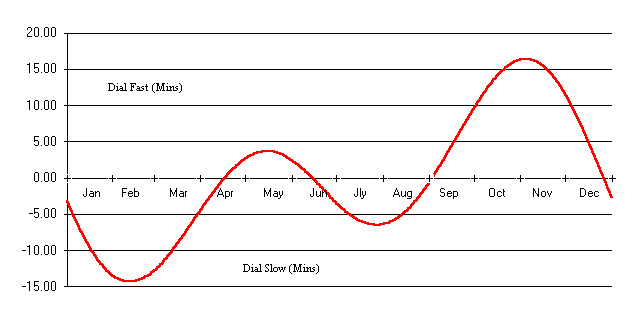Date: Tue, 30 Aug 2005 10:17:35 -0700
>>> [B]ut we already agree on a common position that civil time needs
>>> to mimic solar time for most purposes.
>>>
>>
>> Kashi, Kashi, Kashi.
>>
My apologies - I appear not to be making my point clear (again).
Communication is hard - email communication between individuals who
have never met face-to-face, all the harder. I do question, however,
the success of a rhetorical gambit of chanting the name of a
breakfast cereal :-)
> It's interesting that no matter how much we keep telling him
> otherwise, Rob still claims that "we already agree" on the above
> statement.
>
Yes, I assert that we already agree on what I'm saying - or trying to
say here. Let's put aside six years of squabbling about details and
look at the larger picture.
John Cowan and others on the "leap seconds suck" side of the
discussion have often said things that indicate that, whatever the
tolerance, there is some common sense connection between darkness and
the concept of midnight:
>> "as long as the clock doesn't say noon when it's midnight"
>>
I merely assert that this is 100% equivalent to my statement. First,
implicit in this statement is an assumption that civil time will be
continue to be constructed around the concept of a "day". There is
no a priori reason that civil time ought not be built around a simple
incremental counter like Posix, or that civil time might not be
judged to be equivalent to the calendar, or even to some Star Trek
stardate gimmick - but I seriously question whether civil time could
possibly be ready for such a massive philosophical change for
hundreds of years.
Second, any standard has to meet a minimum requirement for
stability. In the case of civil time, that requirement rests
somewhere between, say, a decade and a millennium. Politicians have
a short memory, but it certainly stretches from one year to the next
- a day or a month or a year is too short for visible effects to be
acceptable to the world's power brokers. On the other hand, we have
expended the last six years worrying about millennial scale issues.
I ain't talking about those. So assume civil time can get by with a
decade scale stability horizon. Over ten years an expression of
civil time resembling our familiar ancient sexigesimal notation has
to remain, ON AVERAGE, synchronized to daylight hours "as long as the
clock doesn't say noon when it's midnight". I also ain't talking
about the apparent Sun wandering back and forth across the sky due to
Daylight Saving Time or the Equation of Time.
What are we talking about for stability? Here is a plot of the
length of the "actual apparent" solar day throughout the course of
the year:
That is, the length of the day is 86400 SI seconds +/- 30s (~15s
RMS). This diagram is perhaps less familiar than its time integral,
the Equation of Time:
Note that daily excursions of tens of seconds accumulate as annual
excursions of tens of minutes. But, as I've said over and over
again, leap seconds are a secular effect, not a periodic effect as
illustrated above. Even just a one second difference between the
length of the civil day and the length of the mean solar day will
accumulate to a one hour shift over the course of a decade - day-by-
day, tiny monotonic epsilons add up.
So, yes, I assert that a one hour slip of civil time versus solar
time is far too large to tolerate over the course of a decade. That
being the case, it follows, like night follows day, that civil time
must mimic mean solar time to better (likely much better) than one
second per day. That's all I was trying to say in the previous message.
Rob Seaman
National Optical Astronomy Observatory
- application/pdf attachment: daylength.pdf

(image/gif attachment: eot3.gif)